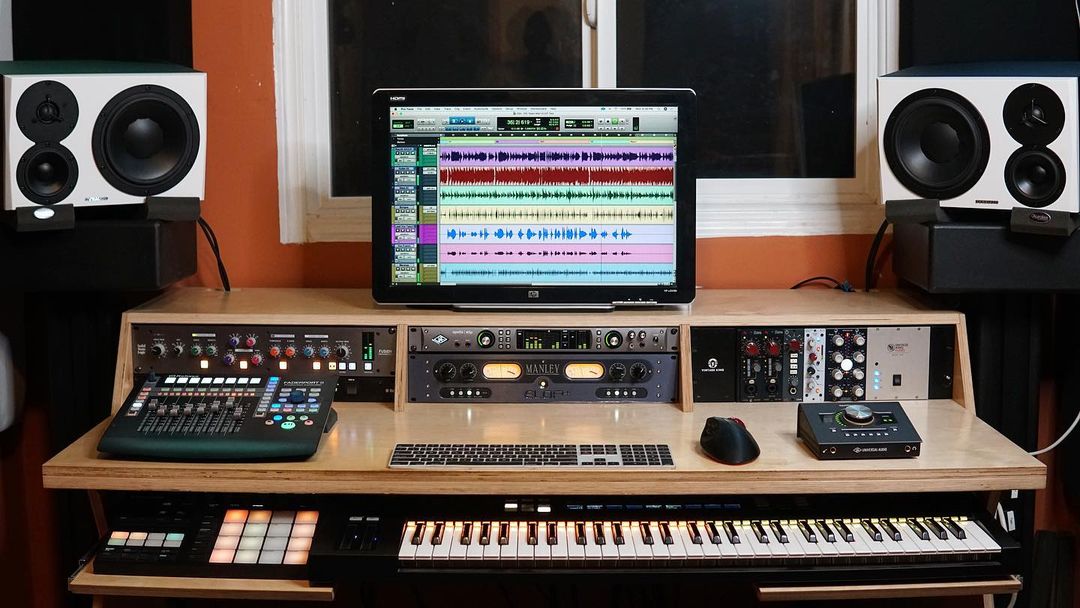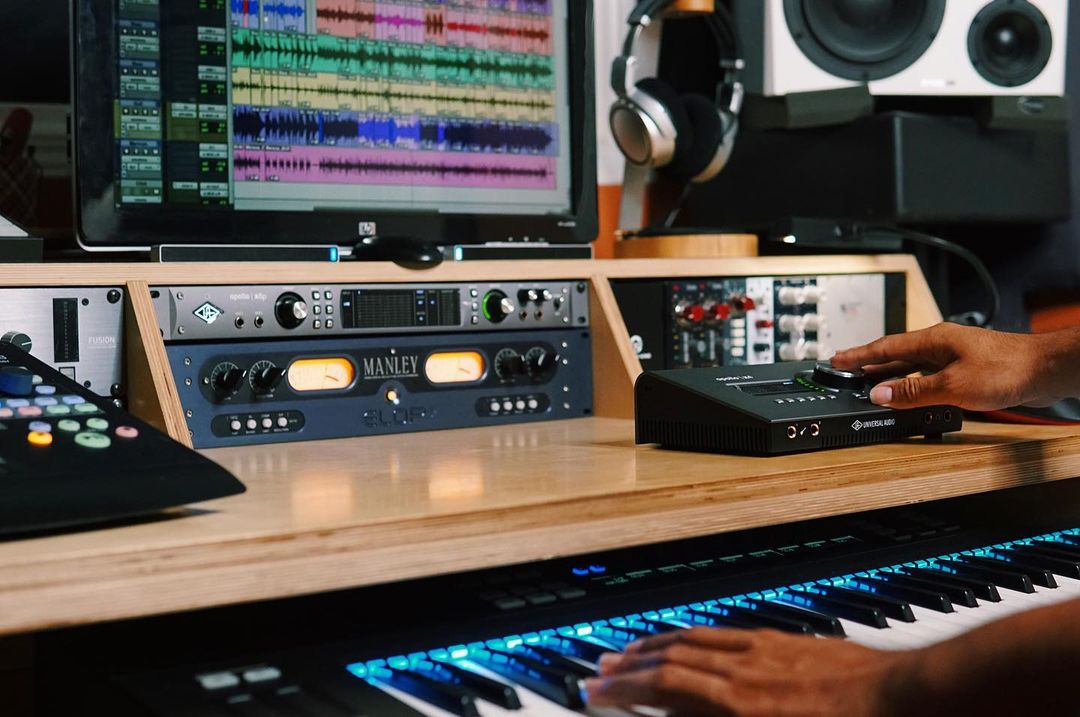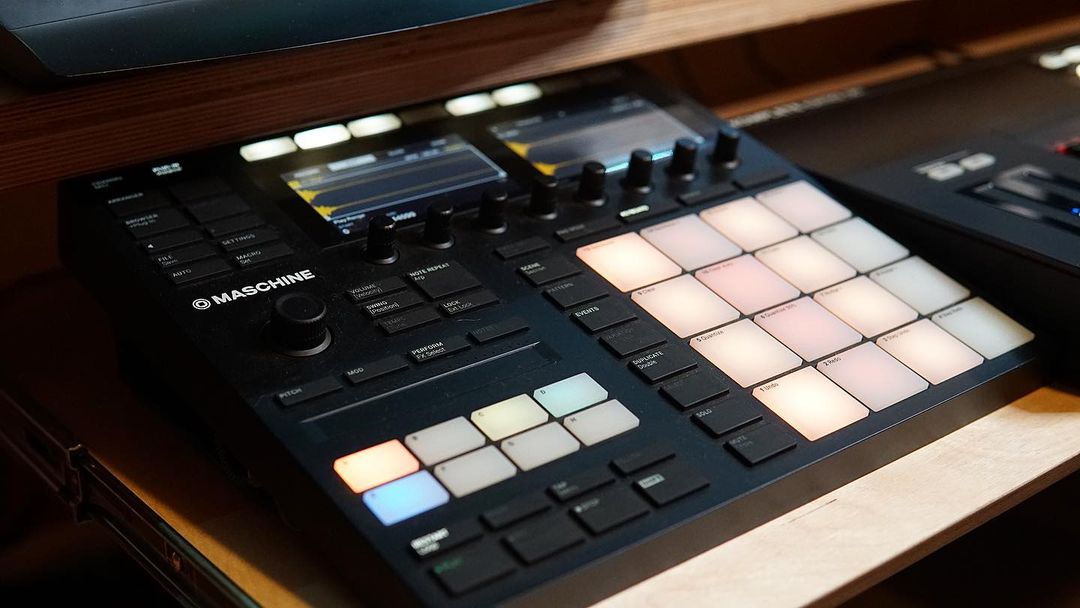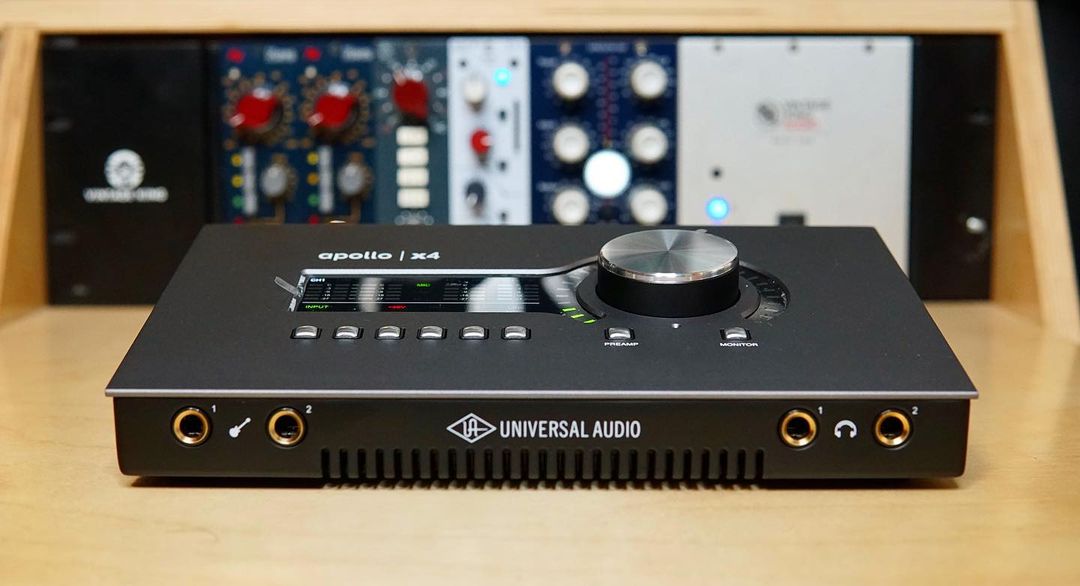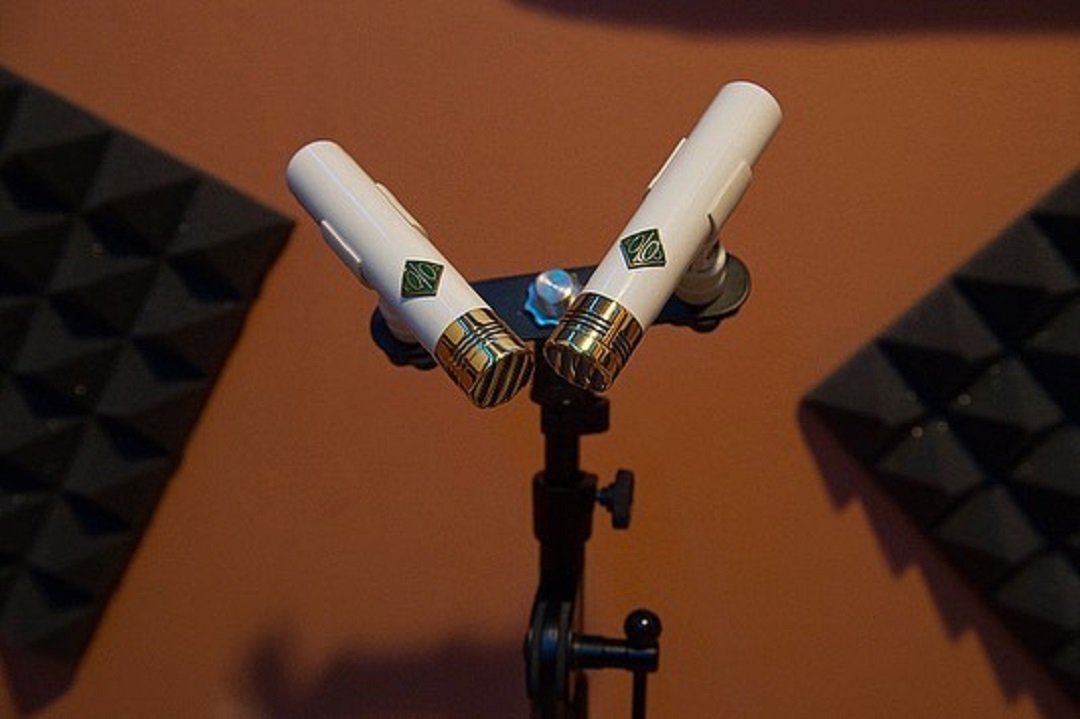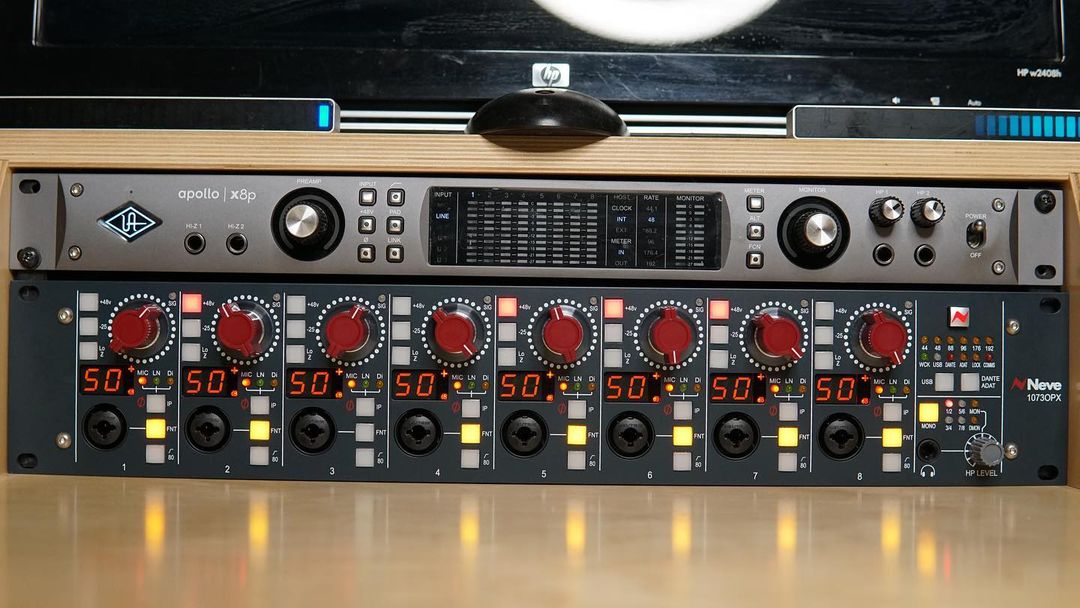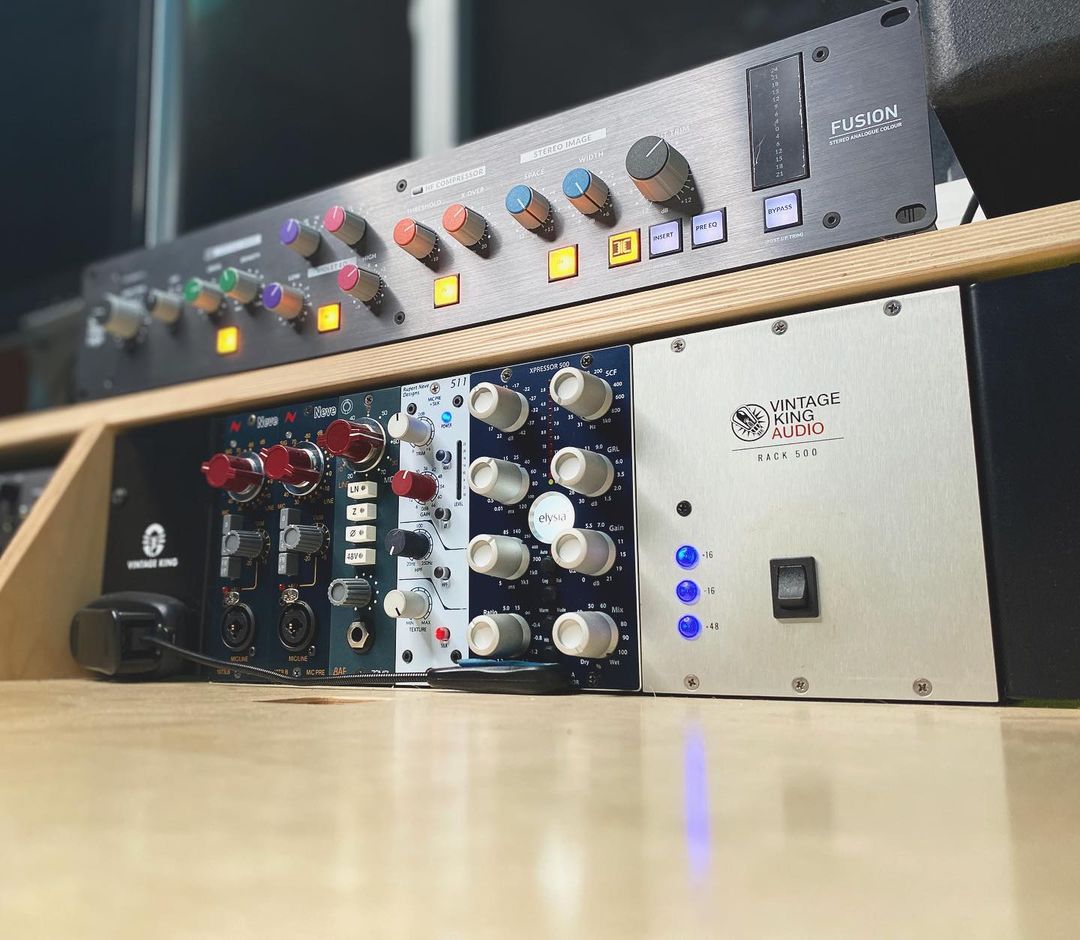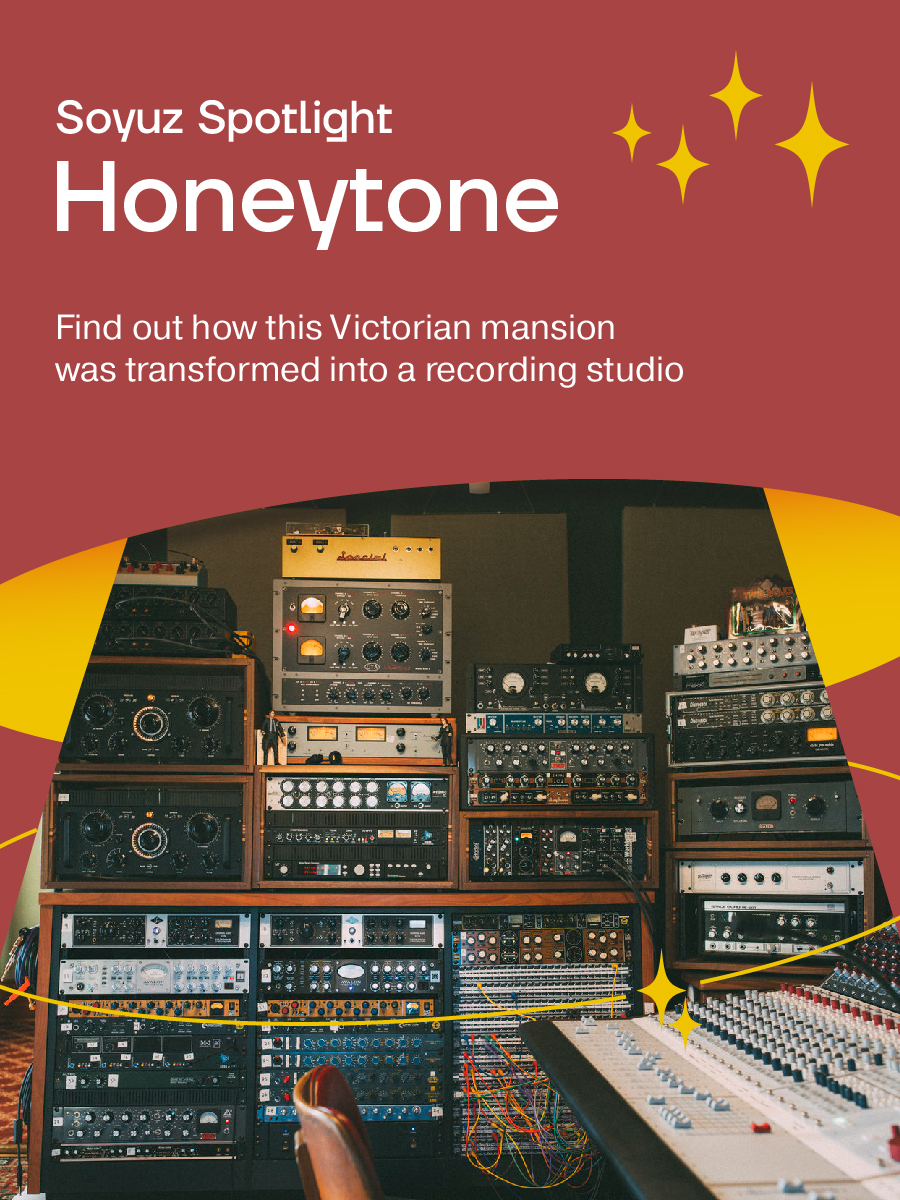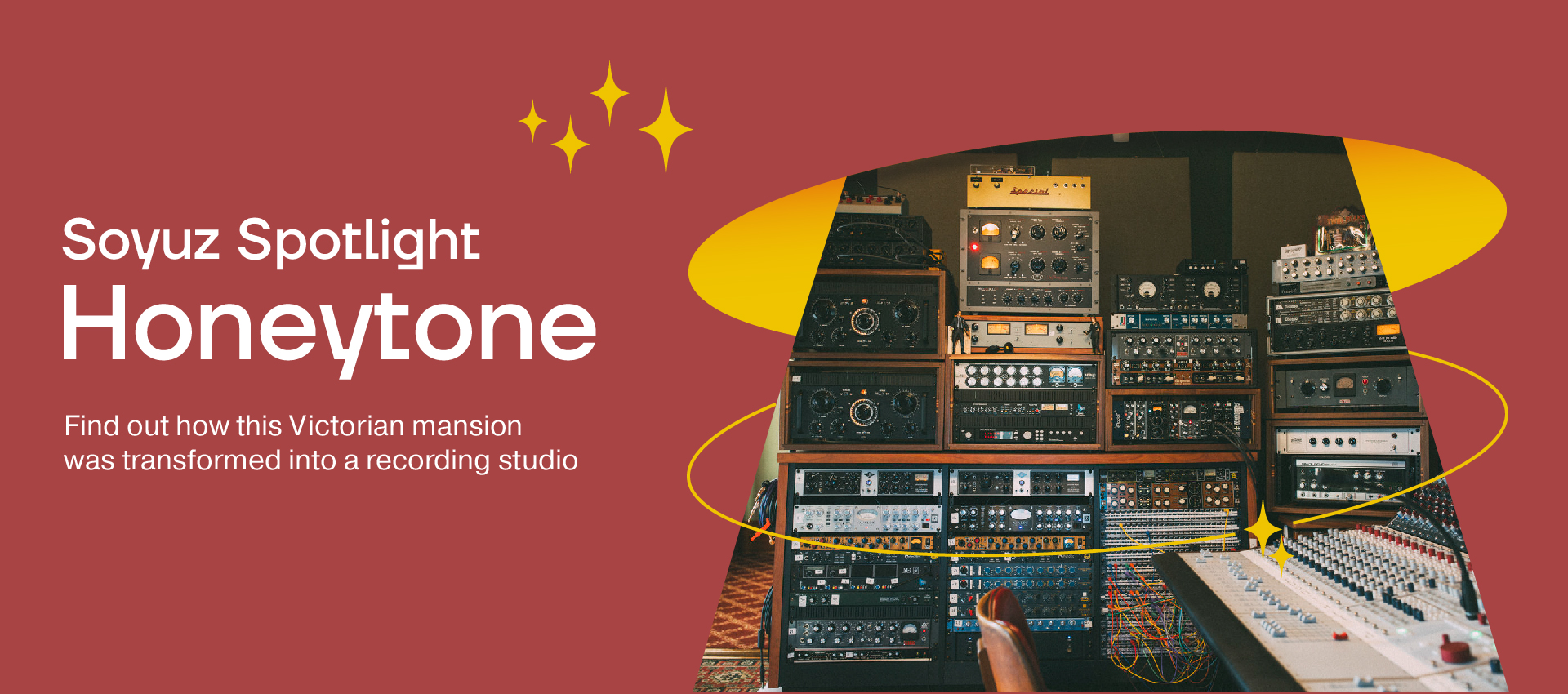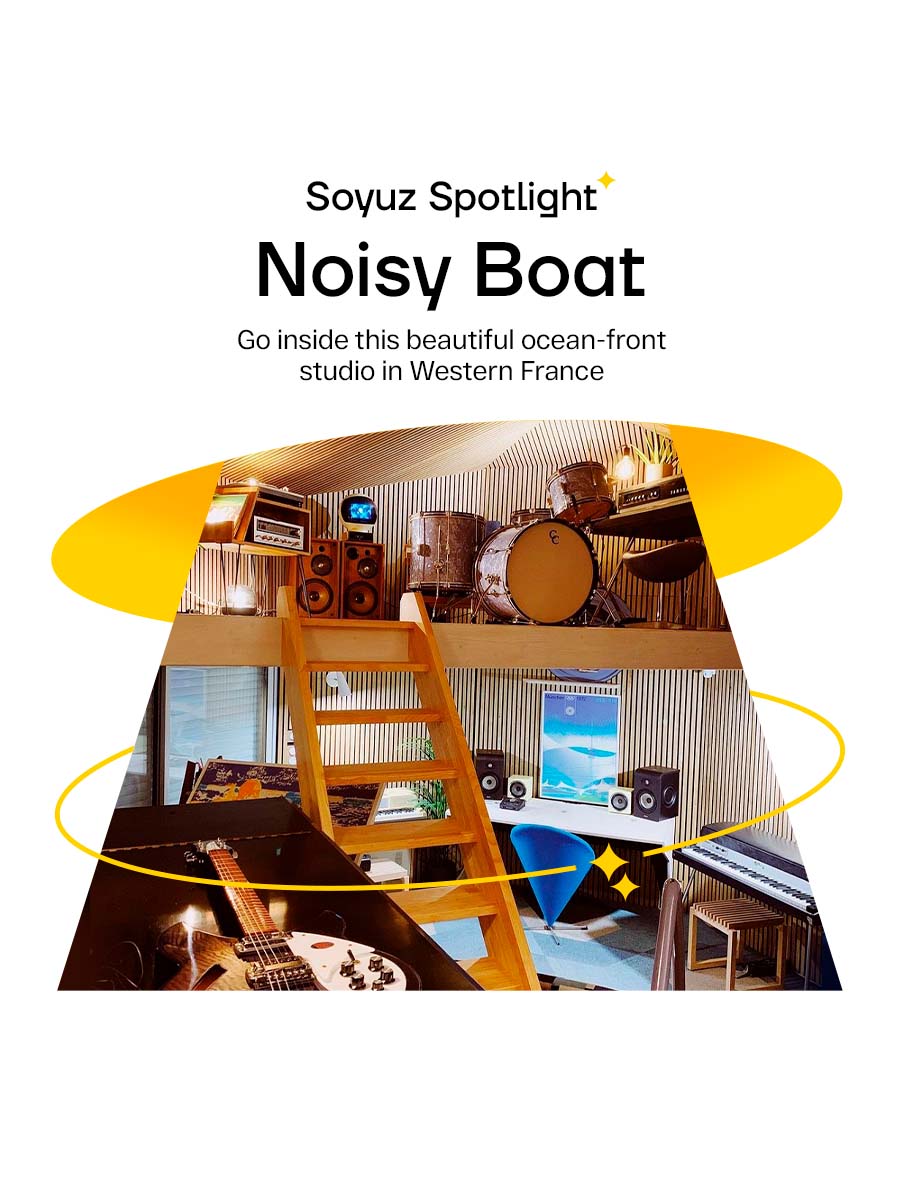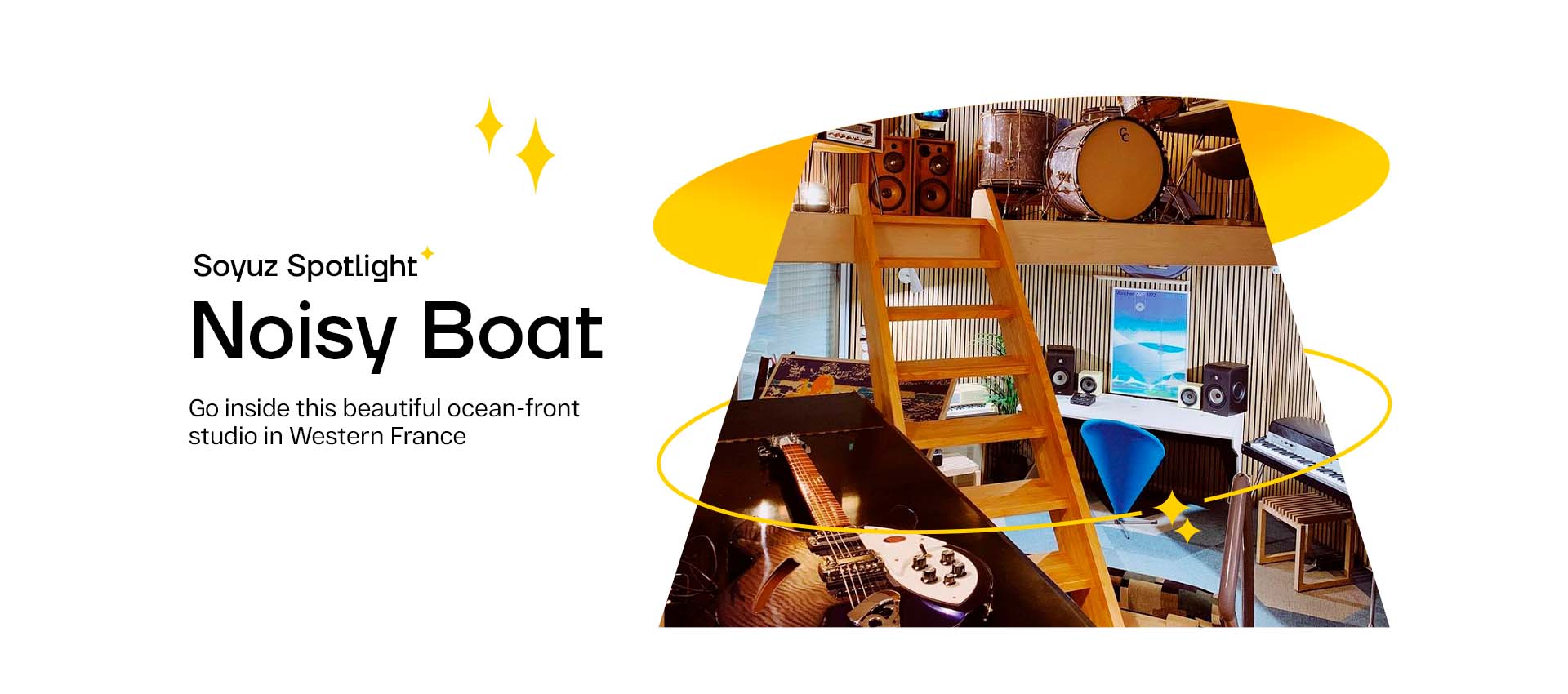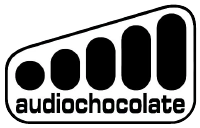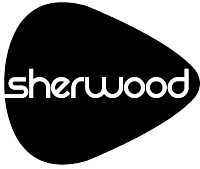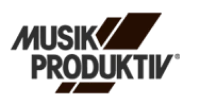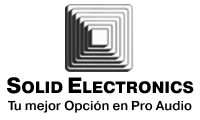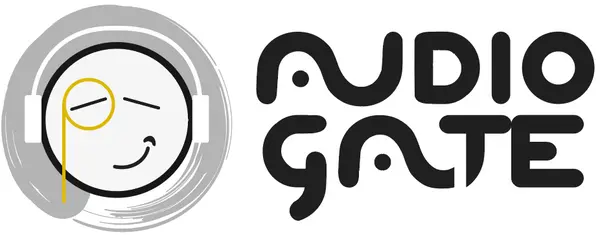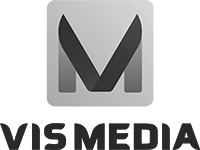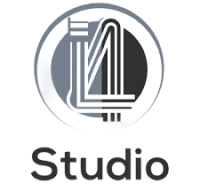Decibel Studios has already left its mark on the studio-packed map of Los Angeles, thanks to an earnest and innovative approach to production and social media. Since starting his home studio in 2017, owner Jesus Martinez has been developing a space that fosters creativity and empowers voices in the Latin music community. After all, if it weren’t for the Latin music culture, Jesus might not be where he is today.
“The first memories I have of listening to Latin music occurred when I was a child. My father would listen to his bolero CDs around the house. He would sit me down and we would marvel at the guitar chops,” says Jesus. “From an early age, bolero music was something I looked up to, even though I didn’t quite understand it yet.”
What would follow was a lifelong mission to honor this traditional music. Jesus’ father taught him how to play requinto at a young age, he headed to Berklee College of Music, graduated with a BA in engineering and became a member of Tres Soul, a traditional group that celebrates bolero music. Once Jesus got Decibel Studios up and running, he began creating unique YouTube series like the Breakfast Table Sessions and Requinto Sessions to showcase these incredible sounds.
Enough with our history lesson, let’s go straight to the source and learn more about Decibel from Jesus.
Anyone who follows Decibel on social media knows the importance of your heritage and your efforts to promote Latin culture. Explain a bit about the importance of educating the general public on Latin music.
Putting my culture at the forefront is critical to me because I want to preserve my Mexican roots that my parents have given me. The specific instrument I play is called a requinto. It’s essentially tuned like a ukulele but with six strings. You can’t learn this style of playing at any school or find sheet music for this instrument. Everyone who has learned the requinto learns by having an older musician teach them. Having the requinto be so limited in learning styles makes it almost a dying art. My father taught me how to play and he was taught by older musicians in Oaxaca, Mexico. And now it’s my turn to teach the next generation. And what better way than to do it through social media. I understand that I have a duty to continue this lineage just like my father did.
I think one of the things you do best at Decibel is meshing old and new. The way you present classic music via social media is really creative. Where did the idea come from to do that?
The idea really just comes from adapting to the times. Social media is the new way to showcase your talent. One ongoing series I have created on Instagram is called Requinto Sessions. They are short 20 second videos of me playing my original arrangements on requinto.
Making a video that’s short and sweet is perfect for people to consume on Instagram. My thought was it’s simple to digest and it will promote the bolero genre at the same time. That’s also why I created our music series The Breakfast Table Sessions to give a platform to folk artists that might not have the resources to get exposure as well as high quality video and audio.
Talk about what goes into your Breakfast Table Sessions. What’s it like recording one of those? What all goes into it?
The Breakfast Table Sessions is a video series I created on YouTube. In these sessions, I invite artists to come and record in my living room. The idea is always to showcase great musical talent that might not have a platform to perform on.
Recording these sessions is a whole day job. It starts by me moving my furniture from my living room and doing long XLR runs from my studio room to our setup. Next, we set up mics and find the best placements for the artists. The performances are always 100% live to capture the essence of the music.
One of the toughest hurdles I go through is mixing the music. This is because I have no acoustic treatment on my walls. I didn’t want to have my living room full of panels on the walls. But I also feel that my room has its own sound. And even though the mixing is tough because of the reflections and bleed I am proud of the end product.
Once the audio is mixed and mastered it is sent off to the videographer to do his edits. And finally a social media campaign to promote the sessions.
I know you’ve used our 013 FETs on some of those sessions. What are some of your favorite applications for that mic when capturing a live band for BTS? What do you like about their sound?
The 013s get used often around Decibel Studios. I personally love using them on acoustic guitar, jarana, and vihuela. I feel like the 013s are one of the most honest mics. It picks up each instrument very naturally.
Another application I constantly use it on is percussion like bongos, congas and maracas. I love how they cut through the mix. Most recently, I used them as drum overheads and loved the space my cymbal sound had.
The studio certainly isn’t just limited to one genre of music and I know you’re a big hip-hop fan. You’ve even said you want to bring together the worlds of hip-hop and bolero songs. What’s your process like for bridging the gap between the classic and modern music you love?
I grew up in Echo Park in the 90s and early 2000s and hip-hop was a prevalent part of my life’s soundtrack. In 2019, my trio Tres Souls decided to create our first EP. So I decided to take a hip-hop lyric and turn it into a bolero song. The lyric comes from Brooklyn MC Talib Kweli, “I can’t ignore your aura cuz it grabbed me by the hand, like the moon pulled the tide, and the tide pulled the sand.” I ended up writing our first original called “La Luna Eres Tu” which translates to “You Are The Moon.”
On that EP, I also took a classic hip-hop tactic of sampling dialogue from movies. I thought if RZA from Wu-Tang did it so can I. I sampled movies from the Golden Age of Mexican Cinema, which goes hand in hand with boleros because a lot of the trios of that era rose to stardom through these movies.
And lastly, I created Decibel Collective, a passion project where I connect the dots of different genres I love. In April 2021. we performed on The Breakfast Table where we did classic boleros songs. but instead of using the normal bolero instrumentation (classical guitar, requinto) we used a Fender Rhodes and electric guitar. As an artist, I constantly try to push myself to create new endeavors.
How do all of these sides of your sonic personality come into play when you are choosing what gear to bring into Decibel?
I grew up playing acoustic instruments. I didn’t even buy an electric guitar till about three years into playing music. This has translated into me appreciating natural sounds, which in my opinion means I have to record with analog gear. I believe class A preamps really help capture the nuances of acoustic instruments.
Being that I have been performing live music every weekend for the past 10 years I have an appreciation of live sound. When I mix records, I try to emulate a live performance in the mix. This makes me find compressors that don’t necessarily feel like they are getting in the way. When you hit certain compressors hard you tend to loose high end, so I try to find gear that doesn’t get in the way too much.
I also love tube mics because they add an analogue character to the my signal chain. With these tools I have created a sonic personality with depth and roundness.
For the gearheads out there, give a basic breakdown of your workflow and some of the major elements of your signal path.
My workflow always begins with an instrument of great quality. In the past years, I have been able to obtain custom handmade guitars made to my liking from Mexico and the US. Then I choose mics from companies like Soyuz, Vanguard Audio Labs and Mojave Audio. In the past few years, I have obtained outboard preamps from companies like BAE, AMS Neve and Rupert Neve Design. Most recently, I bought the AMS Neve 1073 OPX which comes with eight 1073s. I also have some outboard compressors from Manley and Elysia Audio and an SSL Fusion. These tools make it easy to get awesome tones from the beginning and do less in the mix.
What’s a session like at Decibel? Put us in the room and explain how you like to run things.
The first thing I do when I have a scheduled session is having my mics and Pro Tools session ready before the artists arrive. It helps with the flow of not having to run around and get things ready. Being that my recording room is so small I sit with artists on my kitchen countertop table. We usually go over musical ideas in this space.
Then we head inside to record and depending what hat I’m wearing (engineer, producer, arranger) I respond accordingly. When I produce it’s my job to make sure the singer gives his or her best performance. I like to give them scenarios for them to imagine while they sing; “Imagine singing this into someone’s ear.” “This line has a lot of hurt and raw emotion in it, lets emulate that.”
What’s your favorite and least favorite thing about having a home studio?
My favorite part of having a home studio is that I can create whenever I want to. The tools I have accumulated help me reach my sonic dreams. Furthermore, it’s nice I don’t have to travel for work especially with all these crazy gas prices.
But the downfall about it is I struggle with soundproofing as many do in home studios. Furthermore, my girlfriend has to be quiet when she is home while I am recording which is not ideal. But soon that won’t be a problem since we are expanding.
Tell us about the expansion project you’re overseeing right now and what else is coming up at Decibel Studios?
We have a lot of exciting things coming our way. First and foremost, we are building a new 600 square feet studio. We have been working on this project for over a year. It will be equipped with 16 class A preamps, Soyuz mics, Behringer digital personal mixer, triad orbit mic stands, GIK acoustic panels among other audio companies.
We’ll have three rooms; control room, live room and booth. The idea is to be able to record a full band just like how it was back in the day. Playing the Latin scene here in LA, we are all accustomed to performing live so recreating that in the studio is ideal.
The Breakfast Table Sessions are also growing and we have been getting sponsored by audio companies. With the bigger space being here soon, I will be able to larger ensembles for you all to enjoy.
